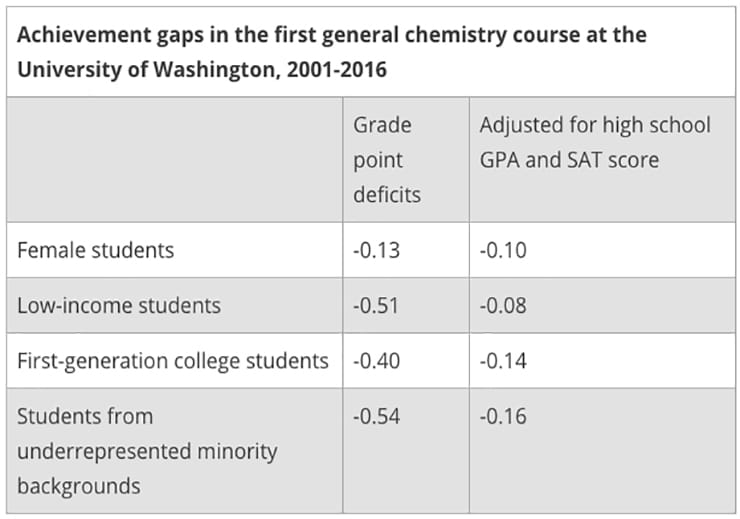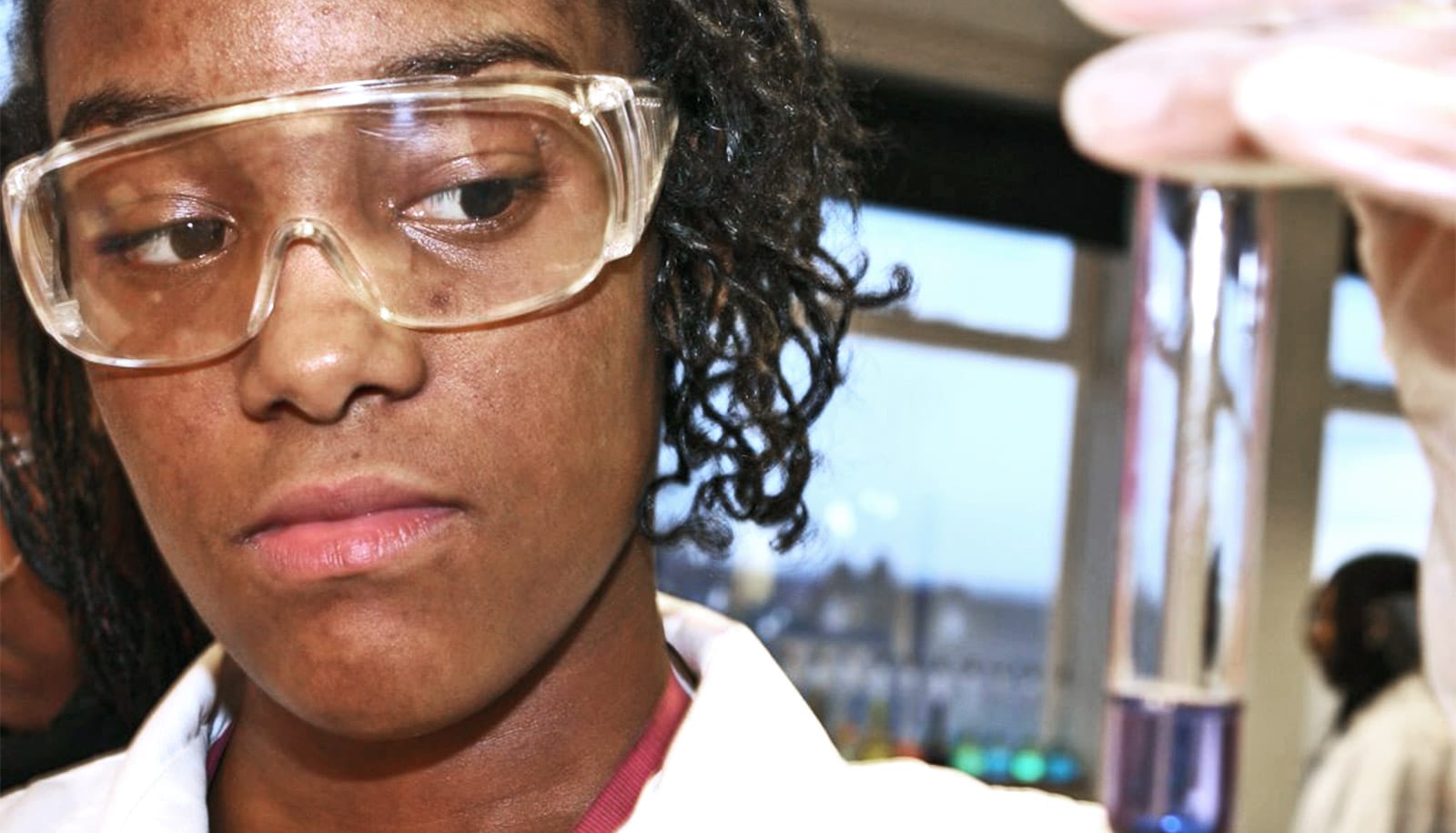General chemistry—a key introductory-level course series for many STEM degrees—is a major barrier for underrepresented students, according to a new study.
Previous studies have shown that students from certain backgrounds are less likely than their peers to complete an undergraduate degree in science, technology, engineering, or mathematics—or STEM.
These groups are low-income students, first-generation college students, female students, and students from underrepresented minority backgrounds: Latinx, African American, Native American, and Native Hawaiian and Pacific Islander.
In the new paper in Science Advances, researchers report that they examined 15 years of records of student performance, education, and demographics for chemistry courses at the University of Washington.
They found that underrepresented students received lower grades in the general chemistry series compared to their peers and, if the grade was sufficiently low, were less likely to continue in the series and more likely to leave STEM.
But if underrepresented students completed the first general chemistry course with at least the minimum grade needed to continue in the series, they were more likely than their peers to continue the general chemistry series and complete this major step toward a STEM degree.

“General chemistry is often the first science course that many would-be STEM majors take in college, and it has a brutal reputation for causing lots of attrition,” says senior author Scott Freeman, a principal lecturer emeritus of biology.
“When we examined this large dataset, we discovered that not only is this true, but it is having a disproportionately negative impact on underrepresented students, and likely contributes to lower diversity in STEM fields.”
A foundation for STEM students
Chemistry is the study of matter—focusing on the structure, properties, and behavior of atoms and more complex compounds. It is its own scientific field, and also a foundational subject for many other scientific disciplines—including biology, medicine, and engineering.
At many colleges and universities, before would-be doctors can take a biology course, they must pass general chemistry courses, which usually last a year.
Under the university’s quarter system, the general chemistry series consists of three courses. At universities with a semester system, the series is often two.
“These students can do the hard work. They have what it takes.”
For the first course in the general chemistry series, the team found that grades for underrepresented students were lower on average than their peers, ranging from 0.13 grade points lower for female students to 0.54 grade points for students from underrepresented minority backgrounds.
Students enter college with different levels of preparation. When the researchers controlled for this by factoring in high school grade-point averages and SAT scores, the gap narrowed for all groups.
For example, the gap narrowed to 0.16 grade points for students from underrepresented minority backgrounds. But for no group did the gap disappear, and the team saw similar patterns for the rest of the general chemistry series.
“The fact that the gap persists even after we correct for different levels of academic preparation means that something else is going on—something that is actively penalizing underrepresented students in general chemistry,” says Freeman.
‘Hyperpersistent’ students
The grade gap has consequences. At the University of Washington and many other institutions, students must receive a minimum grade, often a C-minus or equivalent, in the first general chemistry course in order to take the next one. The team found that underrepresented students receiving a grade lower than the minimum—a D or F—were less likely than their peers who received the same grade to retake the course and thus continue in STEM.
But, the team also discovered that students from underrepresented groups are what Freeman calls “hyperpersistent.” Underrepresented students who received a C-minus or better in the first general chemistry course were more likely than peers who received the same grade to continue the series.
“Underrepresented students are showing resiliency, if they can meet that minimum threshold,” says Freeman.
For the study, the researchers examined records from 25,768 students who took chemistry courses between 2001 and 2016. These included both general chemistry and organic chemistry, a more advanced year-long course series that follows general chemistry and is required for many STEM degrees in chemistry, health, and medicine. The team saw similar, but smaller, disparities in grades and passing rates for underrepresented students in organic chemistry.
Are lectures the issue?
Now that the team has identified a major reason that fewer underrepresented students continue in STEM, Freeman and his colleagues want to understand why. One major reason may be teaching methods. During the study period, both general chemistry and organic chemistry were taught using traditional, lecture-based formats.
Freeman and his team have previously shown that so-called “active learning” methods create more inclusive learning environments and boost student performance in STEM courses. These techniques often rely on discussions and problem-solving approaches, and disproportionately benefit underrepresented students.
There are likely other factors, including larger socioeconomic and cultural issues, says Freeman. But the hyperpersistence the team discovered, if confirmed by other studies, may offer a path forward.
“It may be that if you can make changes to coursework and learning that boost student performance—that help underrepresented students get at least that minimum grade to keep going—they can do it,” says Freeman. “These students can do the hard work. They have what it takes.”
Additional coauthors are from the University of Washington, Adaptive Biotechnologies, and the University of Southern California. Funding for the research came from the Howard Hughes Medical Institute and the University of Washington.
Source: University of Washington



